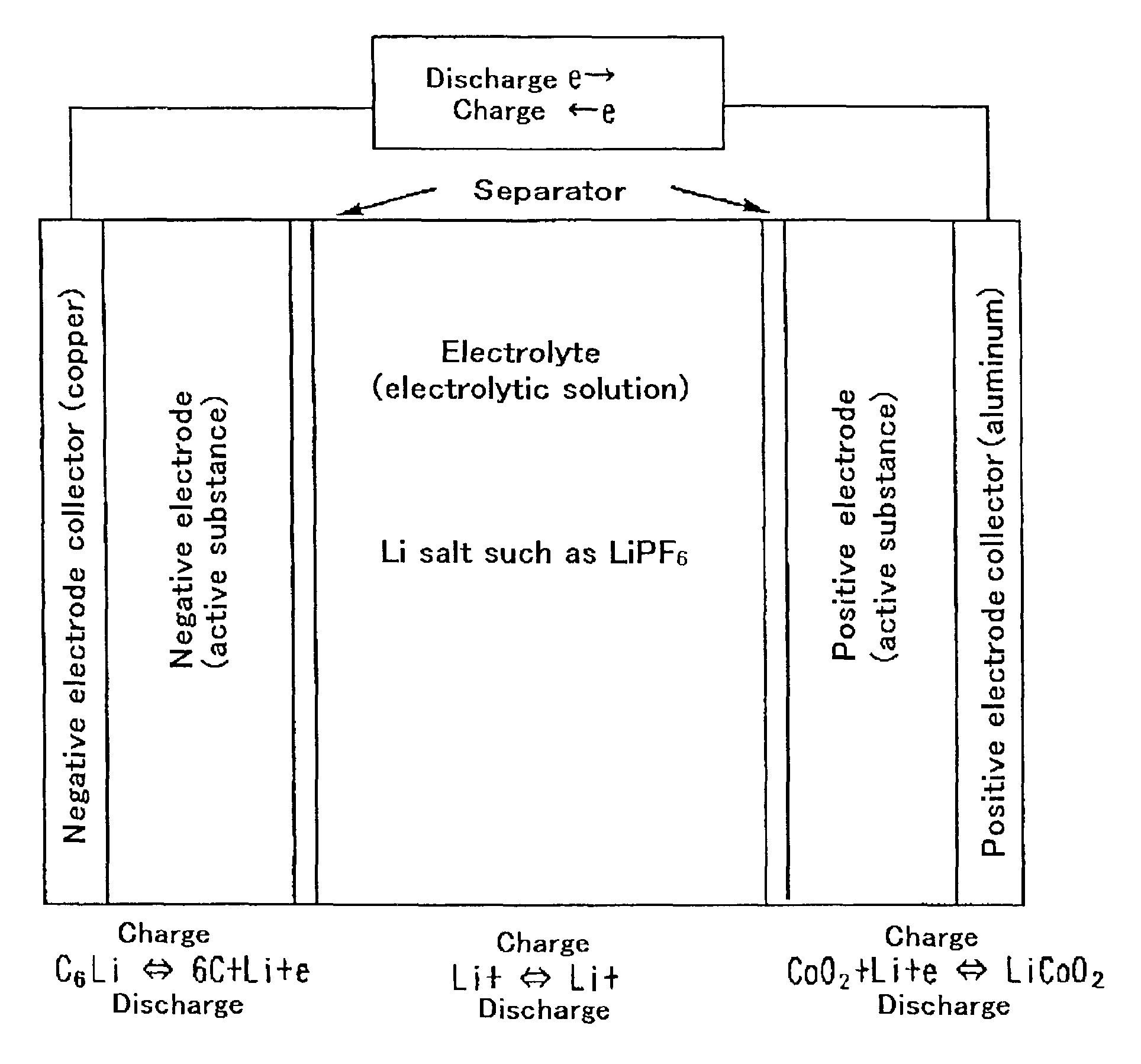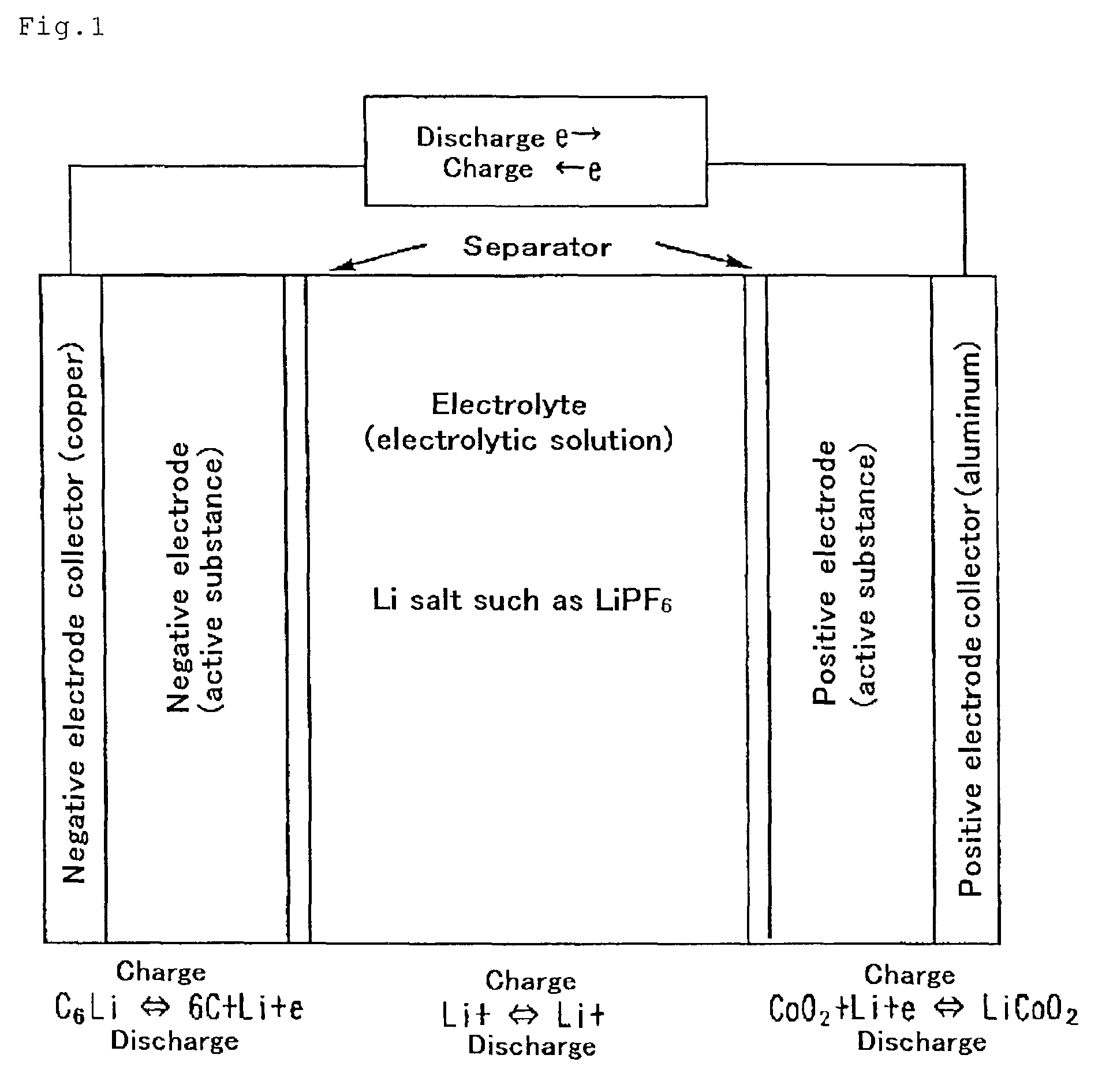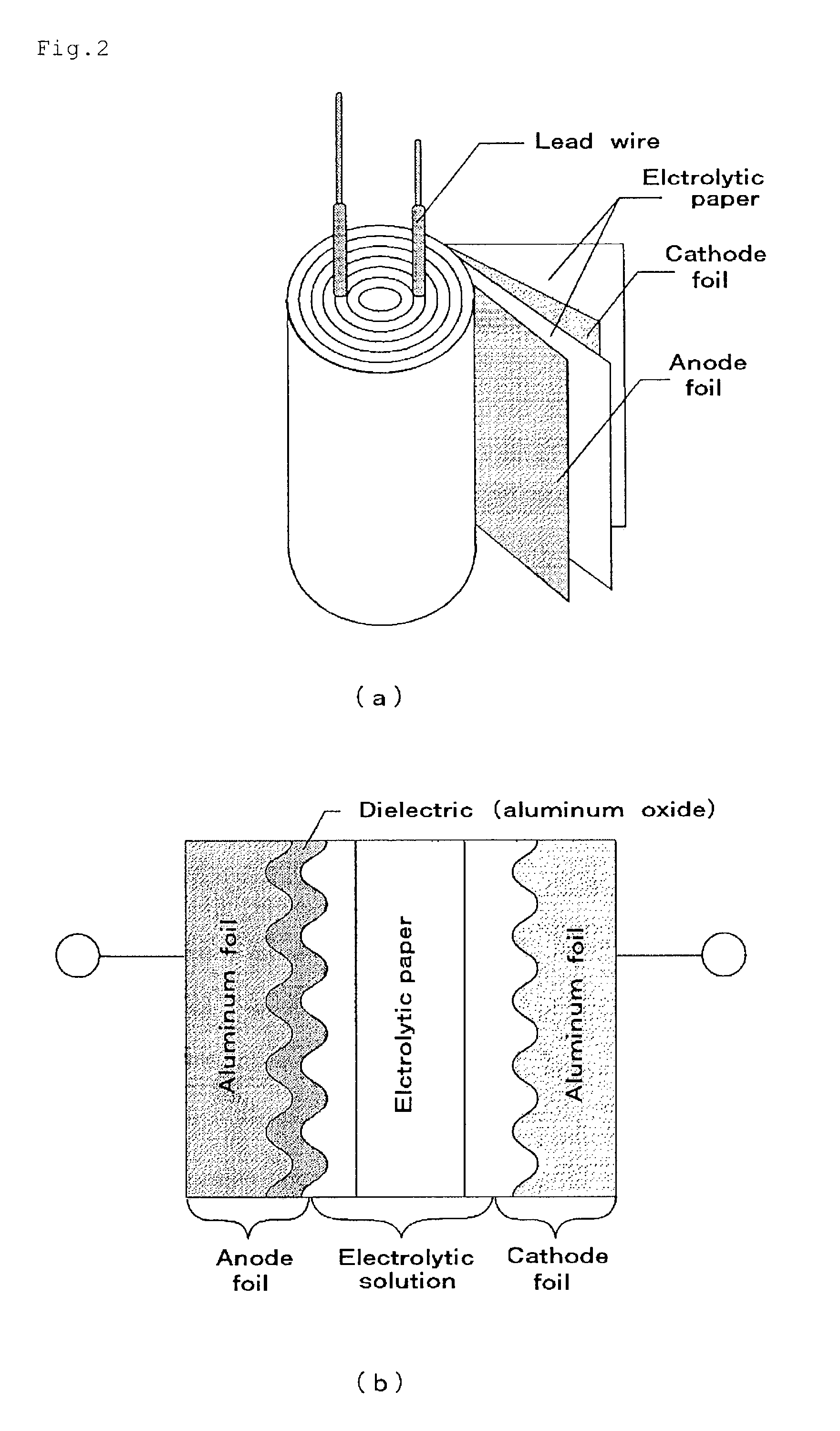Material for electrolytic solutions and use thereof
a technology of electrolysis solution and material, which is applied in the direction of conductive materials, non-aqueous electrolytes, and organic compounds of the group 5/15, which can solve the problems of reducing the life and performance reducing the ionic conductivity of electrodes, and reducing the ionic conductivity of lithium (ion) batteries. , to achieve the effect of preventing the corrosion of electrodes and improving the ionic conductivity
- Summary
- Abstract
- Description
- Claims
- Application Information
AI Technical Summary
Benefits of technology
Problems solved by technology
Method used
Image
Examples
example 1
Synthesis of N-methyl-N-butylpyrrolidinium Dicyanamide
[0130]A flask equipped with a thermometer, nitrogen gas inlet tube, reflux condenser, stirrer and dropping funnel was charged with 11.7 g (67 mmol) of silver dicyanamide, 16.4 g (61 mmol) of N-methyl-N-butylpyrrolidinium iodide and 150 g of deionized water, and the mixture was stirred for 12 hours under a nitrogen stream while maintaining the temperature at 50° C. Then, the matter insoluble in deionized water was filtered off, and the volatile matter was removed using a rotary evaporator. The reaction product thus obtained was dissolved in dichloromethane, anhydrous magnesium sulfate was added, and the mixture was allowed to stand overnight for drying. The magnesium sulfate was then filtered off, the dichloromethane was removed using a rotary evaporator, and the residue was dried under reduced pressure at 100° C. for 6 hours to give N-methyl-N-butylpyrrolidinium dicyanamide (hereinafter abbreviated as MBPyDCA) (yield: 11.4 g, 90%...
example 2
Synthesis of 1-methyl-2-ethyl-3-butylimidazolium Dicyanamide
[0131]The procedure of Example 1 was followed in the same manner except that 14.9 g (61 mmol) of 1-methyl-2-ethyl-3-butylimidazolium bromide was used in lieu of N-methyl-N-butylpyrrolidinium iodide. 1-Methyl-2-ethyl-3-butylimidazolium dicyanamide (hereinafter abbreviated as MEBImDCA) was thus obtained (yield 12.3 g, 87%).
example 3
Synthesis of N-methyl-N-butylpyrrolidinium thiocyanate
[0132]The procedure of Example 1 was followed in the same manner except that 10.1 g (61 mmol) of silver thiocyanate was used in lieu of silver dicyanamide. N-Methyl-N-butylpyrrolidinium thiocyanate (hereinafter abbreviated as MBPyTCA) was thus obtained (yield 11.2 g, 92%).
PUM
| Property | Measurement | Unit |
|---|---|---|
| viscosity | aaaaa | aaaaa |
| viscosity | aaaaa | aaaaa |
| temperature | aaaaa | aaaaa |
Abstract
Description
Claims
Application Information
 Login to View More
Login to View More - R&D
- Intellectual Property
- Life Sciences
- Materials
- Tech Scout
- Unparalleled Data Quality
- Higher Quality Content
- 60% Fewer Hallucinations
Browse by: Latest US Patents, China's latest patents, Technical Efficacy Thesaurus, Application Domain, Technology Topic, Popular Technical Reports.
© 2025 PatSnap. All rights reserved.Legal|Privacy policy|Modern Slavery Act Transparency Statement|Sitemap|About US| Contact US: help@patsnap.com



